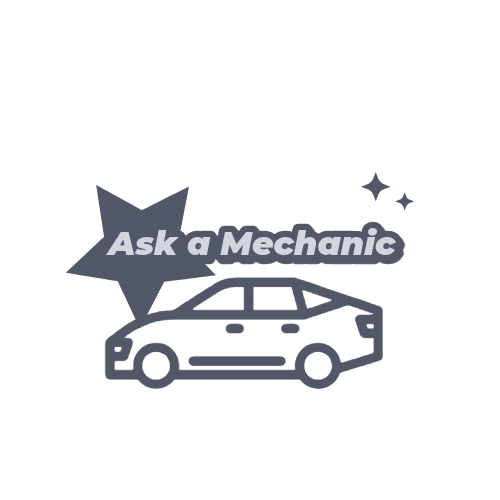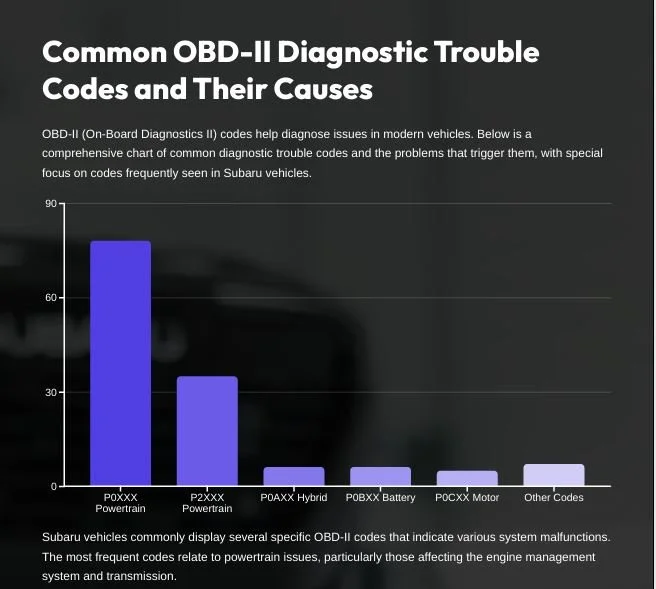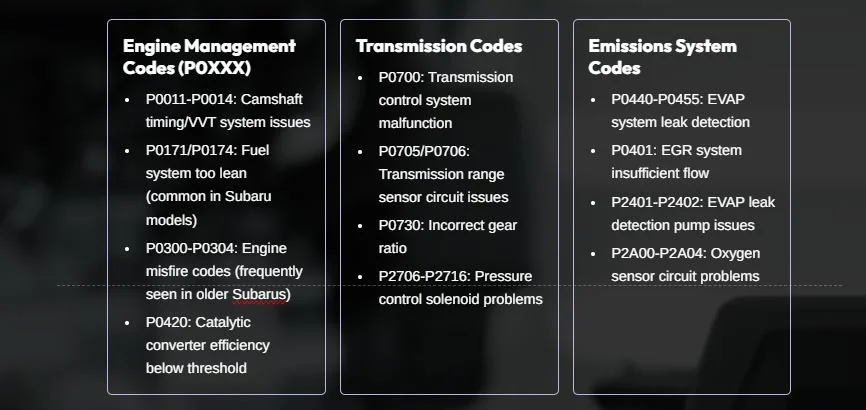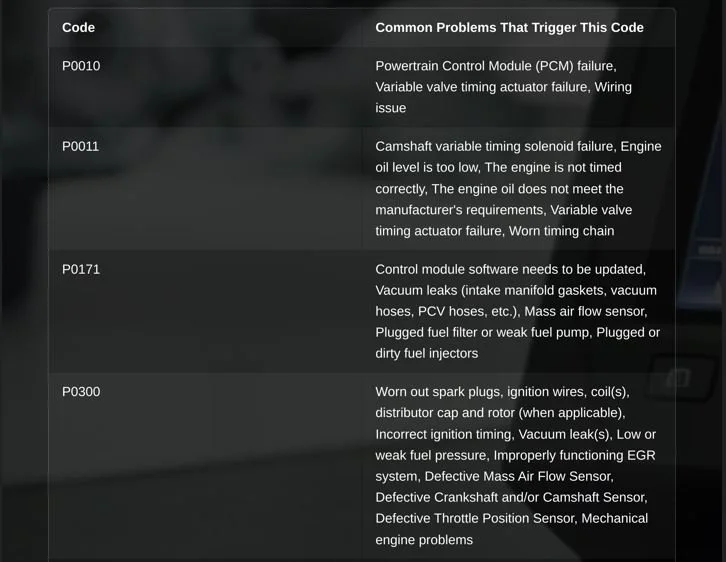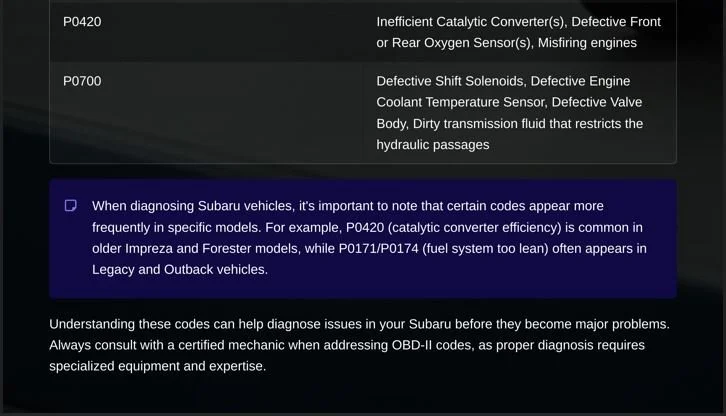What does the check engine light mean for Subarus?
What Is an OBD2 Scanner?
An OBD2 (On-Board Diagnostics, second generation) scanner is a small electronic device that plugs into your car’s diagnostic port—usually located under the dashboard, near the steering wheel. It reads trouble codes that your car’s computer stores when something goes wrong.
These scanners are widely available and cost anywhere from $20 for a basic model to $100+ for more advanced tools. There are also Bluetooth versions that connect to your smartphone via an app. Check out our Amazon store for one we like.
Why this matters: When your check engine light comes on, your car stores a code related to the issue. The scanner retrieves that code and displays it, so you’re not guessing.
Why Is My Check Engine Light On?
Your check engine light could mean a lot of things—from minor to serious. Here are common causes:
Loose or faulty gas cap
Failing oxygen sensor
Misfiring spark plug
Catalytic converter issues
Emissions control system faults
Transmission-related problems
The check engine light doesn’t give you the full story by itself. That’s why a code reader is so helpful.
How to Use an OBD2 Scanner: Step-by-Step
Step 1: Locate the OBD2 Port
Look under the dash on the driver’s side—usually below the steering column. The port is a trapezoid-shaped 16-pin plug.
If you’re having trouble finding it, check your owner’s manual. Most cars built after 1996 are required by law to have one.
Step 2: Plug In the Scanner
Turn your ignition key to the “on” position, but don’t start the car yet. If you have a push-button start, press it once or twice without pressing the brake pedal.
Plug the scanner firmly into the port. It should power on automatically (some Bluetooth models may require you to open the app).
Step 3: Read the Codes
Follow the scanner’s on-screen prompts. On most models, you’ll press a button like “Read” or “Scan.” Within seconds, a list of trouble codes will appear.
The codes will look like this:
P0171 – System Too Lean (Bank 1)
P0302 – Cylinder 2 Misfire
P0455 – Evaporative Emission Control System Leak (Large Leak)
Some scanners also display a short description of the code.
Step 4: Interpret the Code
Once you have the code, you can look it up in the scanner’s manual, on the app, or on websites like OBD-Codes.com. Many auto parts stores also offer free interpretation.
Step 5: Decide What to Do Next
Now that you know what’s causing the warning light, you can:
Fix it yourself (if it’s simple)
Monitor it (if it’s not urgent)
Take it to a mechanic with confidence
What Do the Codes Mean?
Each OBD2 code starts with a letter:
P – Powertrain (engine, transmission, emissions)
B – Body (airbags, power windows)
C – Chassis (brakes, steering)
U – Network (communications systems)
The letter is followed by a four-digit number. For most drivers, the important thing is to look up a plain-English explanation of the code and understand if it’s urgent.
Examples of Common Codes and What They Mean
P0442 – Small evaporative emission system leak. This often means a loose gas cap. Easy DIY fix.
P0300 – Random misfire. Could be spark plugs, coils, or fuel-related. Needs attention.
P0420 – Catalyst efficiency below threshold. Often related to the catalytic converter or oxygen sensor.
P0128 – Coolant temperature below thermostat range. Often a thermostat issue.
Some are simple and safe to drive with temporarily. Others require immediate service. The scanner helps you know which is which.
What Not to Do
Don’t ignore the code. Even if the light turns off on its own, the problem may return or worsen.
Don’t clear codes to hide issues. Clearing the code doesn’t fix the issue—it just resets the light. Many inspection services will know it’s been cleared.
Don’t panic. A check engine light doesn’t always mean a big repair. Let the scanner guide your next steps.
Benefits of Using an OBD2 Scanner
Saves money – Avoid unnecessary diagnostic fees.
Reduces stress – Understand what’s wrong quickly.
Improves communication with your mechanic – Show up informed.
Empowers teen drivers and families – Use it as a teaching tool.
Family & Teen Driver Tip
Teach your teen how to use the scanner the first time the check engine light comes on. It’s a simple, confidence-building lesson that can turn a stressful moment into an educational one.
You can do this!
The OBD2 scanner is one of the most underrated tools for car owners. You don’t need to be a mechanic, and you don’t need a garage full of tools. With one small device and about five minutes, you can find out what’s triggering your check engine light and make informed decisions.
If you’re serious about becoming more confident as a car owner, learning to use a scanner is a perfect first step. It’s affordable, accessible, and practical.
So the next time your check engine light pops on? Don’t panic. Plug in the scanner, read the code, and take control of the road ahead.
If you have a vehicle that’s a 1996 or newer and you need help working through this process, or you have a code and want support talking through what the problem could be, reach out.
